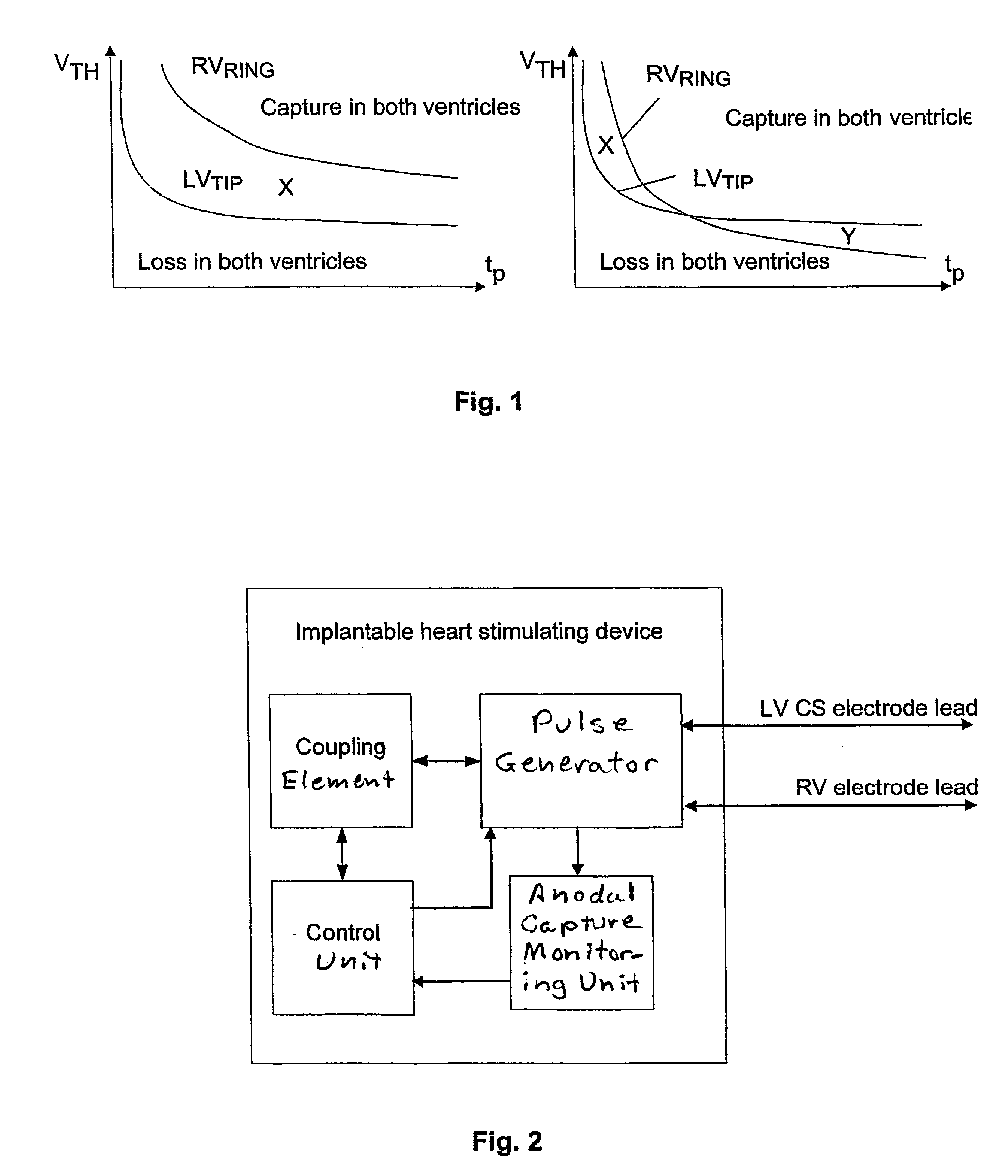Implantable heart stimulation device with remedial response to anodal capture
a heart stimulation and anodal capture technology, applied in heart stimulators, electrotherapy, therapy, etc., can solve the problems of unfavorable cardiac vein electrode fixation into the myocardium, and unfavorable cardiac vein electrode fixation
- Summary
- Abstract
- Description
- Claims
- Application Information
AI Technical Summary
Benefits of technology
Problems solved by technology
Method used
Image
Examples
Embodiment Construction
[0028]As stated above the present invention concerns an implantable heart stimulating device, in particular a biventricular pacemaker system, where LV stimulation is performed between the LV-tip (cathode) and the RV-ring (anode).
[0029]In a bi-ventricular pacing system, a small diameter, often unipolar, left ventricular (LV), coronary sinus (CS) electrode lead and a bipolar right ventricular (RV) endocardial electrode lead are preferably employed to provide left and right heart chamber pacing / sensing electrodes. The LV CS lead is advanced through the superior vena cava, the right atrium, the ostium of the coronary sinus (CS), the CS, and into the coronary vein descending from the CS to locate the LV active pace / sense electrode at a desired LV pace / sense site.
[0030]The RV electrode lead is advanced into the RV chamber to locate RV tip and ring electrodes therein.
[0031]A requirement that makes non-simultaneous biventricular pacing and VV-delay optimization is that no anodal ring stimul...
PUM
 Login to View More
Login to View More Abstract
Description
Claims
Application Information
 Login to View More
Login to View More - R&D
- Intellectual Property
- Life Sciences
- Materials
- Tech Scout
- Unparalleled Data Quality
- Higher Quality Content
- 60% Fewer Hallucinations
Browse by: Latest US Patents, China's latest patents, Technical Efficacy Thesaurus, Application Domain, Technology Topic, Popular Technical Reports.
© 2025 PatSnap. All rights reserved.Legal|Privacy policy|Modern Slavery Act Transparency Statement|Sitemap|About US| Contact US: help@patsnap.com


